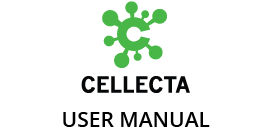Most of the lentiviral vectors used in making Cellecta’s pre-made libraries and constructs express a puromycin resistance gene. For other pre-made products as well as customized libraries and constructs, other selection markers such as blasticidin (BlastR), hygromycin (HygroR), neomycin (NeoR), or bleomycin (BleoR) may be substituted.
Regardless of the selection marker that the plasmids express, you need to know the concentration of antibiotic that kills untransduced cells within a given amount of time in order to successfully select transduced cells. We recommend the following methods for obtaining a “Kill Curve”.
Puromycin Kill Curve
To create a Puromycin Kill Curve for your target cells, follow the protocol below.
- Aliquot cells in a 12-well plate, at a density such that they are at 72 hours from confluency.
- Add puromycin at concentrations of 0, 0.5, 1, 2, 5, and 10 μg/ml in six different wells.
- Mix and place the cells at 37°C in a CO2 incubator.
- Grow cells under standard conditions for 72 hours.
- Count viable cells, and determine the lowest concentration of drug that kills at least 95% of cells in 3-5 days.
Use this concentration at the puromycin selection step during your experiment.
Blasticidin Kill Curve
To calculate a Blasticidin Kill Curve, follow the same protocol above and use the same concentrations as for the Puromycin Kill Curve.
Hygromycin Kill Curve
If using hygromycin, follow the same protocol as for the Puromycin Kill Curve but use 0, 50, 100, 200, 400, and 800 μg/ml hygromycin in six different wells.
Neomycin Kill Curve
If you are using a construct with a neomycin selection marker, you need to test for resistance to geneticin (G418). Use the same protocol as for the Puromycin Kill Curve, but use a range of concentrations between 400-800 μg/ml.
Need more help with this?
Contact Us

